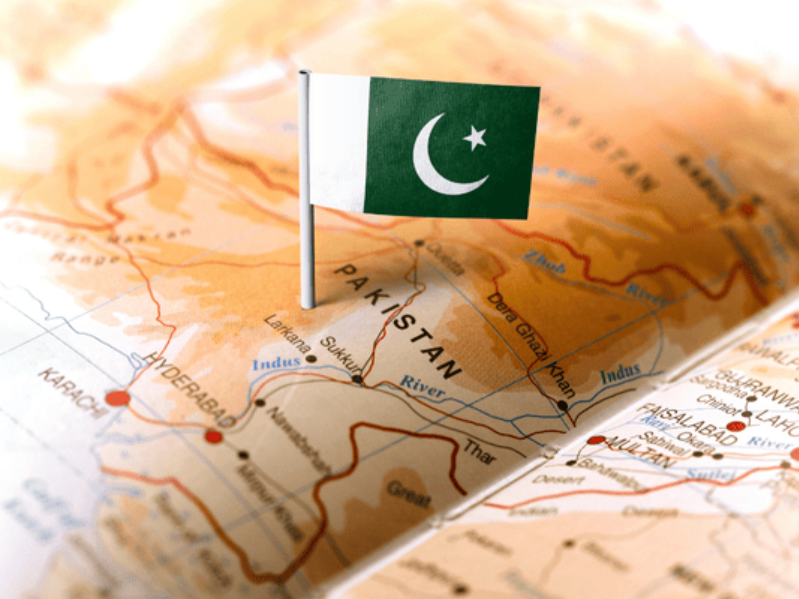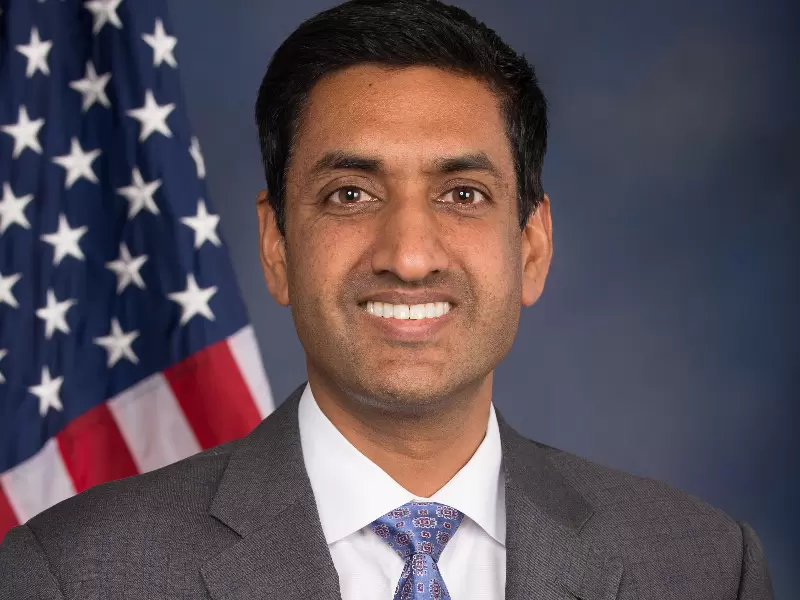South Asia’s reckoning: Will Pakistan be next?
In Pakistan, the conditions for revolt already exist. The economy has been gutted through debt, inflation has impinged on households, and corruption has diminished trust in institutions.
 Representative Image / Canva
Representative Image / Canva
South Asia is undergoing rapid and turbulent shifts. The 2022 uprising in Sri Lanka, the political upheaval in Bangladesh in 2024, and Nepal’s sudden turmoil this year have jolted the region in ways few had anticipated. Governments once thought secure have fallen, one after another, to popular demands for accountability. Now, all eyes are on Pakistan, teetering on the edge of a similar crisis. The real question may no longer be if Pakistan will face such a reckoning, but when.
A Wave of South Asian Uprisings
This South Asian kind of cascade began to unfold in Colombo in 2022. After years of misgovernance under the rule of then President Gotabaya Rajapaksa and Prime Minister Mahinda Rajapaksha, Sri Lanka was crippled by shortages of food, fuel, and medicine. It led to what became known as the “Aragalaya” protests, which was an unprecedented uprising that drew a cross section of people, including students, workers, clergy, and ordinary citizens alike.
What began as anger at soaring inflation quickly escalated into a full-blown revolt against then-President Mahinda Rajapaksa and his family’s dynasty. By July, the Rajapaksas had fled their official residence, leaving behind a trail of collapse and humiliation.
Two years later, it was Dhaka when student demonstrations in June 2024 against a job reservation policy morphed into a protest movement against Prime Minister Sheikh Hasina’s increasingly authoritarian governance. During the last few years of Hasina’s rule, Bangladesh witnessed suppression of dissent, and the narrowing of democratic space which fueled frustration among wide sections of people.
When the protests swelled into nationwide unrest in what became known as the “July Uprising”, the government cracked with PM Hasina fleeing the country. The interim administration of Muhammad Yunus was installed to restore order, though uncertainty still hangs over Bangladesh’s trajectory with no sight of elections yet.
Then, over the last few days, it is Kathmandu which has become the epicentre of protests. What began as protests against the KP Sharma Oli government’s attempt to ban regulate social media, spiralled into a nationwide crisis.
Though widely seen as an effort to silence Gen Z (young) voices, the socioeconomic roots of the protests cannot be overlooked with high unemployment, stagnant economy, and brain drain. It may be noted that a large section of Nepali citizens has been forced to move out of the country in search of livelihood given the precarious situation of jobs back home. Being fragile from years of political instability, Nepal saw its state institutions buckle under the pressure of youth-led mobilization with Prime Minister Oli resigning.
Although each of these cases are distinct and driven by local grievances, one cannot miss the lines of similarity with economic assessments, failing governance and systemic corruption playing an identifiable role. Additionally, ruling elites who appeared untouched by economic suffering contributed to such frustration among the masses. Therefore, this sense of betrayal from leaders and institutions, and from their fake promises of prosperity has proven incendiary throughout the region.
Pakistan: On the Edge of the Same Cliff
Seen through this regional lens, Pakistan looks eerily familiar. Its economic fragility, political repression, and and the ever-expanding generational disillusionment are uncannily similar to the conditions that brought down the governments of its South Asian neighbours.
On the economic front, Pakistan has been lurching from one crisis to another. Though its economy never really took off, but in 2022, the country was on the brink of defaulting on its debt repayment commitments. It narrowly escaped collapse thanks to emergency capital infusions from the International Monetary Fund (IMF), Gulf monarchies, and China.
Its external debt has accumulated in excess of $125 billion ($130 billion in 2024) and has been a heavy burden on its economic management. It should be noted that IMF has already approved two successive bailouts of $3 billion (2023) and $7 billion (2024) in as many years. Even China, Islamabad’s strongest partner, has been compelled to quietly extend repayment schedules.
But bailouts do not resolve economic mismanagement even as IMF has preconditioned its loans on structural reforms. It has a direct bearing on the people with inflation for instance peaking to over 38 percent in 2023 before being brought down.
Moreover, the country’s unemployment remains relatively high at around 8 percent as of 2025. In terms of poverty, the World Bank estimates that 45 percent of Pakistan’s population lives in poverty, with 16.5 percent in extreme poverty. This is not simply an economic problem but a social bomb waiting to explode.
It should be noted that youth discontent is always dangerous and can manifest in violent ways if not addressed at the right time. In fact, with a median age of merely 20.6 years, Pakistan is one of the youngest countries in the world. And yet there are grossly very less opportunities for employment, upward economic mobility, and political participation.
For many young Pakistanis, the state offers little other than corruption, nepotism and repression. When that frustration ultimately boils over, as seen in the protests on May 9, 2023, where other than pro-Imran Khan sentiments anti-regime discontent was visible, the state responds not with dialogue but with an iron fist.
The Military’s Grip
That iron fist belongs, overwhelmingly, to the Pakistan Army and its powerful intelligence arm, the Inter-Services Intelligence (ISI). The military has largely been engaged in engineering politics for decades by installing compliant governments, removing inconvenient ones, and making sure that civilian governments do not become too autonomous at any time. The instruments of repression such as enforced disappearances, custodial killings, and targeting political activists, journalists and students, are familiar to many Pakistanis.
The May 2023 crackdown was emblematic. After protests erupted over the arrest of former Prime Minister Imran Khan, thousands of supporters of his Pakistan Tehreek-e-Insaf (PTI) were rounded up. Among them, hundreds have been tried in military courts, ironically with the approval of so-called civilian government’s parliamentary sanction and judiciary’s acquiescence.
Khan himself, once seen as the military’s protégé, now languishes in prison over corruption charges, held on a litany of cases which the critics say are politically motivated.
The Looming Reckoning
It is this inflammable mix where economic precarity, generational frustration, and authoritarian stranglehold have converged makes Pakistan’s position dangerously perilous. Pakistan’s rulers may believe their repression makes them untouchable. But history suggests otherwise as even entrenched regimes can be swept away once public anger grows.
As Sri Lanka’s Rajapaksas, once considered immovable, were forced to flee in disgrace, so did Sheikh Hasina, whose grip on Bangladeshi politics was once ironclad for nearly two decades. Likewise, Nepal’s Oli, who sought to control the digital voices of Nepal’s youth, is now out of office.
In Pakistan, the conditions for revolt already exist. The economy has been gutted through debt, inflation has impinged on households, and corruption has diminished trust in institutions. While the betrayal of the youth, whose aspirations are thwarted at every turn, adds another layer of volatility, the only missing ingredient is a spark. The fall, in other words, is not a matter of if but when.
What Lies Ahead
For now, Pakistan’s military dominated establishment may believe that it can continue to manage dissent and keep the system afloat with foreign bailouts. But the playbook is vulnerable as with new cycle of repression deepens resentment, each IMF package postpones rather than resolves collapse, and each act of political engineering erodes legitimacy further.
The fate of governments in Sri Lanka, Bangladesh and Nepal should be reminder that legitimacy cannot be manufactured by force but rather earned through governance, accountability, and responsiveness to the needs of citizens. Pakistan’s ruling elite, be those in barracks or their civilian allies, has yet to grasp this lesson.
When the day of reckoning arrives, as it is bound to, it won't be because outsiders caused it to happen. It will most likely be because common Pakistanis, faced with the same problems as their neighbours in Colombo, Dhaka, and Kathmandu, would have decided they have had enough. Then, Pakistan’s military may discover that even the most perfected machinery of repression cannot withstand the tide of a betrayed generation.
The writer is an author and columnist. He has authored more than 15 books including a book titled "Taliban: War and Religion in Afghanistan"
(The views and opinions expressed in this article are those of the author and do not necessarily reflect the official policy or position of New India Abroad)
ADVERTISEMENT
ADVERTISEMENT
E Paper
Video




1744362597.jpeg) Arun Anand
Arun Anand












Comments
Start the conversation
Become a member of New India Abroad to start commenting.
Sign Up Now
Already have an account? Login